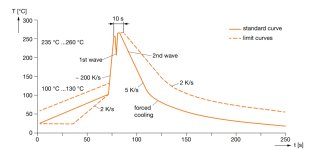- Joined
- Oct 6, 2015
- Messages
- 1,522
- Points
- 113
Deleted
Last edited:

Follow along with the video below to see how to install our site as a web app on your home screen.
Note: This feature may not be available in some browsers.




I used my smd hot air gun and sat the array on wood blocks rather than clamping it in a vice or anything thermally conductive.I have 3 brand new NUBM-71 diode blocks i can not extract any i try 400C and nothing the not coming out any suggestions!!
I wonder what is better for the diodes, the longer process and prolonged exposure of a heat gun or the rapid heating and shorter duration of a torchI used a blow torch for 5sec and all fell out i was waiting to push it outi will see to sell some since the are new 0hrs $40 NUBM47-A4
Sounds like the torch may be a safer method.I used a hand torch and all pop out in 5sec i touched one diode and it was not even hot pretty
I think an argument could be made in favor of using a a torch in this situation.I have a reflow station as well. You might want to get one of these.
Agreed. I have an 852D workstation and it's a great tool for pretty much 99.9% of the work I do.The reflow station is good for other purposes than just to remove diodes. Mine has a temperature controlled iron which is great for what it was intended to do.
How long will it take to extract diodes using a reflow station hot air gun ?
Mine has a max temp of 500c and takes approx 4-7mins of heating evenly with the largest tip and airflow set to its highest.How long will it take to extract diodes using a reflow station hot air gun ?

If I remember correctly, with the blue diodes the chip is not bonded with indium as seen in NIR 808's for example.Careful with excessive heat you will either melt bondwires or the LD crystal will become detach from base both leading to low power or dead diode. I'll fetch the pictures of the heat curve used to solder/desolder them. Heatplate is your friend. And also careful when you eject them a hard drop will also move LD cystal out of place while hot.
Here is the soldering temperature all take a total of 4-5 minutes
And no more than 1 minute at high heat.
View attachment 78084

